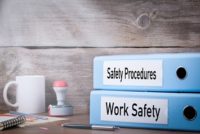The articles here will show you how to build safety culture, and maintain it when you do. We’ll talk motivation technique, incentives, employee contests, recognition programs, and other safety awareness methods.
Building an ideal safety culture requires a focus on a variety of factors, including Leadership, Systems, Behaviors, Employee Engagement, Internal Person Factors, and Conditions. Therefore, protecting ourselves and others in an optimal way has always required a variety of interventions. This has never been more true than during these times of COVID-19.
When it comes to communicating your safety goals to an entire organization, do you know how to “tip your message”? This idea of the tipping point, defined by author Malcolm Gladwell as “the moment of critical mass, the threshold, the boiling point,” can be hugely beneficial when initiating safety culture within your organization. This idea […]
Environment, health, and safety (EHS) managers are always looking for ways that they can mitigate risk, take preventive action against potential hazards and incidents, and improve their company’s overall safety culture. Behavior-based safety (BBS) is an effective tool that can be put to use in achieving all of these goals.
COVID-19 is not merely a temporary interruption to our everyday lives, it has ushered in a new reality within the working world. For environment, health, and safety professionals, the time to plan for operations within the context of this new reality is right now. So what do you need to be thinking about in order […]
May is Mental Health Awareness Month, and in the United States, we are in the midst of an opioid crisis and a suicide epidemic, on top of the global COVID-19 pandemic. Every year, approximately 47,000 Americans die by suicide. It is a preventable public health problem and one of the leading causes of death across […]
How effective is your safety training program? You know training is required by federal or state regulations, but does occupational health and safety training really result in fewer employee injuries and illnesses?
Safety committee members are there for their organizations, employees, and each other. So, do you need a safety committee? Depending on your company size and location, the hazards present in your facility, or past workers’ compensation claims, you may be required to have one. Safety committees also may be required if you have a collective […]
In our most recent episode of EHS on Tap, we spoke with Terry L. Mathis, founder and CEO of ProAct Safety, about the challenges and opportunities that await safety professionals in the new decade. Terry will also be presenting the opening keynote address titled What’s Next for the Workplace Safety Professional: A 20/20 View on […]
The EHS profession is constantly evolving and these ongoing shifts present both challenges and opportunities. We’ve all heard that hindsight is 20/20, but today we’re looking to provide our listeners with some foresight into what to expect on the safety front as we progress through the year 2020. With that goal in mind, we’re talking […]
America’s pipelines are integral to our economy, supplying the country with the crude oil and gas that fuels our businesses and day-to-day activities. But while the pipeline industry may be among the most important of our country’s industries, without awareness, training, and staunch commitment to safety regulations, pipeline work can also be among the riskiest.










